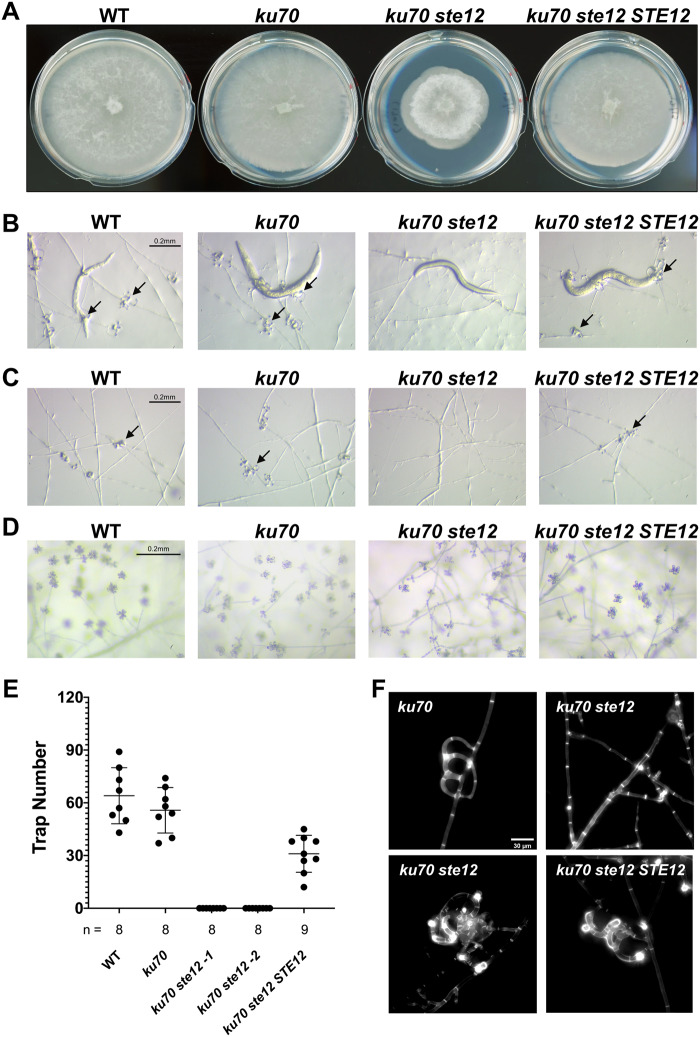Figure 3.
The Ste12 transcription factor is required for proper and rapid trap formation. (A) Colony morphologies of WT, ku70, ku70 ste12, and a complemented strain (ku70 ste12 STE12) after incubation for 4 days at 25 °C on PDA plates (5 cm diameter). (B) Trap morphologies of the WT, ku70, ku70 ste12, and the complemented strain after 24 h of exposure to 30 C. elegans nematodes for fungal cultures grown on LNM plates (2.5 cm). The arrows indicate traps produced by A. oligospora. (C) Trap morphologies after 24 h of induction by ascr#18 (1 mM, 1 µl). The arrows indicate traps produced by A. oligospora. (D) Conidiation of ste12 mutant and the complemented strain after 4 days of culture on PDA plates. (E) Quantification of trap number induced by presence of 30 C. elegans nematodes for WT, ku70, two independent ku70 ste12 mutants, and the STE12 complemented strain (mean ± SEM; n shown along the x-axis). (F) Images of traps formed by the ku70, ku70 ste12, and ku70 ste12 STE12 strains after 30 h of continuous induction with 50–60 nematodes. Vegetative hyphae and traps of A. oligospora are stained with SR2200, which specifically binds to fungal cell walls.

